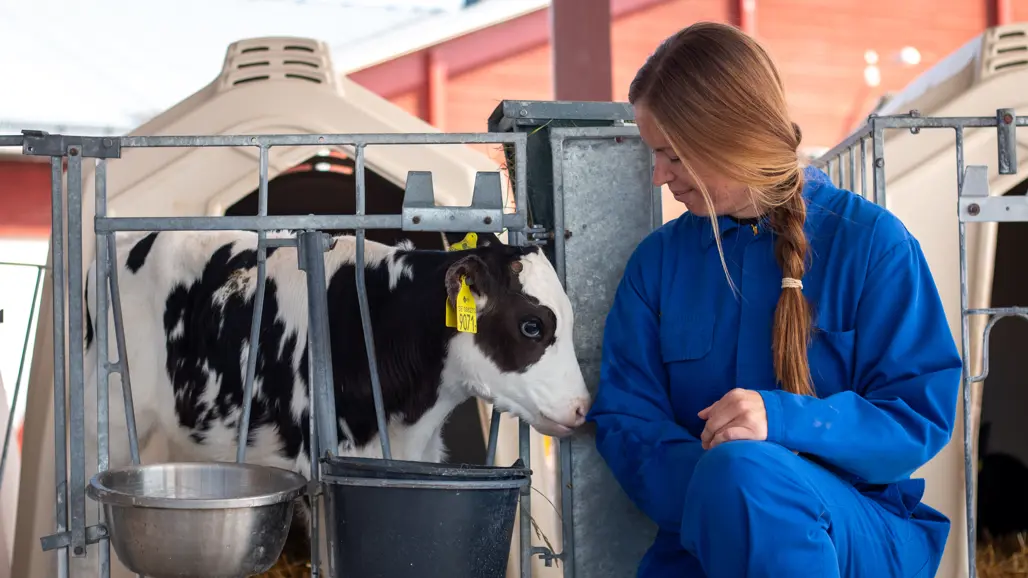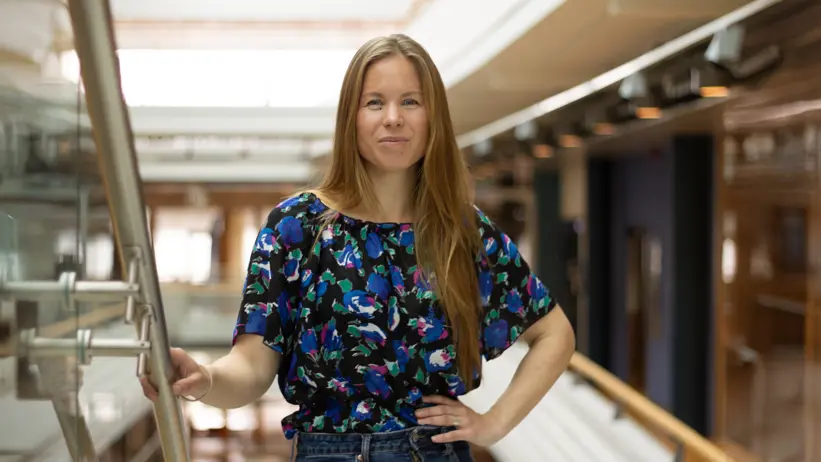
More meat on the bone
Many people want to drink cow's milk, but fewer think about what happens to the calves that are raised just to make the cows produce milk. A more sustainable approach is now being explored that may point the way to a society where we work smarter instead of harder and increase our self-sufficiency.
After many years of carefully selected breeding, dairy cows and beef cows are now two completely different types of what were basically the same animal. One is relatively slender, as large parts of the body's resources are used to produce milk for the large udder. The other is tough, robust and well-muscled to provide plenty of meat.
But unlike beef-type calves, which are born with a large body mass and are therefore well placed to generate a lot of meat, dairy calves (even when kept for meat production) grow up to be leaner, meaner versions of their relatives.
But maybe there is a smarter solution?
Meat x dairy breed cross
Traditionally, breeding is thus kept pure between the two branches of cattle, dairy and beef: dairy cows are mated to a bull of the same type, and beef cows to a beef breed bull. But a method that is also used, albeit to a much lesser extent for cattle in Sweden, is to cross the two types - to get calves that are a cross between the two.
Internationally this is more common, but in Sweden the figures are as low as only 24-29% of semenings on dairy cows are done with beef breeds.
So the question is why don't more Swedish dairy farmers choose a beef breed bull for the dairy cows whose calves are not intended for further breeding anyway? Researchers are now seeking answers to this question, as one of the four parts of the “More meat on the bone” project.
Work smarter - not harder
There are several potential advantages of crossbred calves, compared to purebred dairy calves, in cases where they are not going to continue in dairy farming:
- Health benefits for the crossbred calves which, thanks to the meat animal genes and the crossbreeding effect, are both more robust and healthier
- From a eco-friendly aspect, as more meat can be obtained per animal from crossbred calves than dairy calves, without having to keep more animals.
- In addition, it is a way of increasing Sweden's degree of food self-sufficiency, which currently stands at 57% for beef. A higher degree of self-sufficiency can provide greater security, not least in a changing world.
But, there are also challenges.
Cooperation between cow farmers, with contribution from research
Reviewing the possibility for more Swedish farmers to choose crossbred calves is thus about working more climate-smart and seeing the full value of all animals, for better animal health and also greater self-sufficiency within the country.
But there is also a lot to get right, including the size of the crossbred calves to avoid problems when the dairy cow is giving birth; which production systems these crossbred calves work best in/if any crossbred type works better in any system; and investigating the importance of these crossbred calves being somewhat similar to each other, for example to be kept in similar groups and fed the same type of feed.
And working closely with farmers is an important part of ensuring that the research project is useful and can design tools that can be practically applied on farms.

Facts:
- The PhD position is funded by the Swedish Agricultural Research Foundation (SLF) and is expected to last for the period 2024-2028.
- Victoria Ekenberg is a PhD student in the project, together with a research team consisting of:
- Susanne Eriksson, main supervisor and researcher in genetics and animal breeding at the Swedish University of Agricultural Sciences, SLU
- Mikaela Jardstedt, researcher in beef and lamb production at SLU
- Christian Bengtsson, from VikingGenetics
- Erling Strandberg, Professor of Quantitative Genetics and Breeding at SLU
- Lotta Rydhmer, Professor of Quantitative Genetics and Breeding at SLU
- and Elisenda Rius Vilarrasa, who works with breeding evaluation and genetics at the livestock association Växa
The elements of the project can be broadly described as:
- The first part is about describing the perception of crossbred calves among Swedish farmers of both beef and dairy production types who already have experience of them. The data consists of about 20 in-depth interviews, spread around farms across the country. The questions can be such as:
- How do these crossbred calves function on the farm today in terms of poor maintenance (feeding, bedding, group cohesion, etc.)?
- What choices do you actively make when selecting a beef bull for your dairy cows?
- What choices do you actively make when selecting a beef bull for your dairy cows?
- The second part involves mapping the production systems for crossbred calves in Sweden today, through a nationwide data collection. The data is retrieved from the databases of Kokontrollen, Jordbruksverket and Växa, which collect data from all farms throughout Sweden. This part will complement the in-depth interviews in the first part of the project.
These two elements form the basis of the research project. -
The third part then builds on the information from the first two sub-projects and aims to develop an updated breeding index, i.e. guidelines on breeding for crossbred calves, which is as suitable as possible for our Swedish conditions. Finally, it is planned to test this new breeding index for crossbred animals against actual use and compare it with existing breeding indexes (recommendations) for purebred beef bulls, as well as crossbred indexes for beef breeds on dairy cows (the so-called Nordic Beef on Dairy Index).
- The fourth and last part of the project and its design remains to be seen, but there will be a continued focus on the sustainability of the breeding work with these crosses.
Contact
-
Person